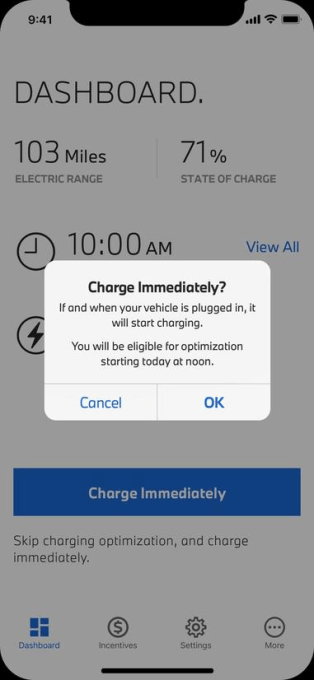BMW and PG&E team up to prepare the electric grid for millions of EVs
BMW Group and California utility Pacific Gas & Electric are rolling out the next phase of a pilot that aims to test - and learn - how electric vehicles could support the integration of renewable energy on the electric grid.
The ChargeForward program, now entering its third phase, is open to PG&E customers who drive a BMW electric or plug-in hybrid electric vehicle. Around 3,000 drivers can sign up to voluntarily allow their vehicle to be smart charged" when electricity demand is low and renewable energy availability is high. Drivers will earn incentives for participating in the program, including $150 at sign-up and an additional $250 per year.
The program is one of the longest-running partnerships between an electric utility and an automaker. The first two phases had only 100 and 400 participants respectively, so this latest phase presents a marked expansion for the collaboration. It's a sensible alliance for two industries that are preparing for the gradual decline in sales of internal combustion engines. For electric utilities, this means planning for a drastic increase in customer demand on a grid that is increasingly powered by renewable resources like solar and wind.

Image Credits: BMW
Let's assume someone plugs in at home on a Saturday morning at 9 a.m. and sets their departure time for 4 p.m. that day," Adam Langton, BMW's Energy Services manager who oversees the ChargeForward program, explained. The ChargeForward software system communicates with the vehicle and determines that the vehicle is more than half full, needing two hours of charging to fill up the battery. The system then evaluates the person's home electricity rate, renewable energy availability and congestion on the grid in their neighborhood. On this day, there is no congestion on the grid and solar energy will be very high in the afternoon. The ChargeForward system directs the vehicle to start charging at 1 p.m. and complete charging by 3 p.m. This allows the driver to get a full battery prior to their departure time."
Electricity demand tends to follow a duck curve" shape, peaking in the early evening as people return home from work - right as solar energy resources go offline. And people tend to charge their EVs overnight. To meet this demand, fossil-fuel-emitting resources like natural gas ramp up.
The result? More greenhouse gas emissions. A study published by MIT researchers in Environmental Science and Technology" found that in California overnight EV charging produces around 74% more GHGs than midday charging. (Variations in the grid mix matter here - in wind-heavy regions in the Midwest or Texas, overnight EV charging may make the most sense as lots of wind tend to be generated overnight.)
The ChargeForward program aims to take advantage of the ample renewable resources available during the day and reduce GHG emissions in the process. Participating customers will enter their charging preferences and departure times on a BMW ChargeForward mobile app. BMW will also receive real-time information about the grid, such as the availability of renewable energy relative to the customer's location, and it will use this data to calculate an optimal charging window and send it automatically to the vehicle. Customers will be able to opt-out of the charging shift at any point through the app.
While California is known for pursuing ambitious clean energy goals - including codifying into law a landmark target of achieving 100% renewable and zero-carbon electricity by 2045 - the state has also set a goal of getting 5 million EVs on the road by 2030. And that's no surprise, considering that transportation is the single largest source of GHG emissions in the state.
BMW and PG&E will also collaborate in a lab setting to explore vehicle-to-grid technologies that enable EVs to discharge electricity to the power grid. Such bidirectional functionality could allow EVs to be used as big backup generators in the case of emergencies or as distributed nano power plants to help balance the grid throughout the day.
The third phase of the ChargeForward program begins in mid-April and runs through March 2023.
Can solid state batteries power up for the next generation of EVs?